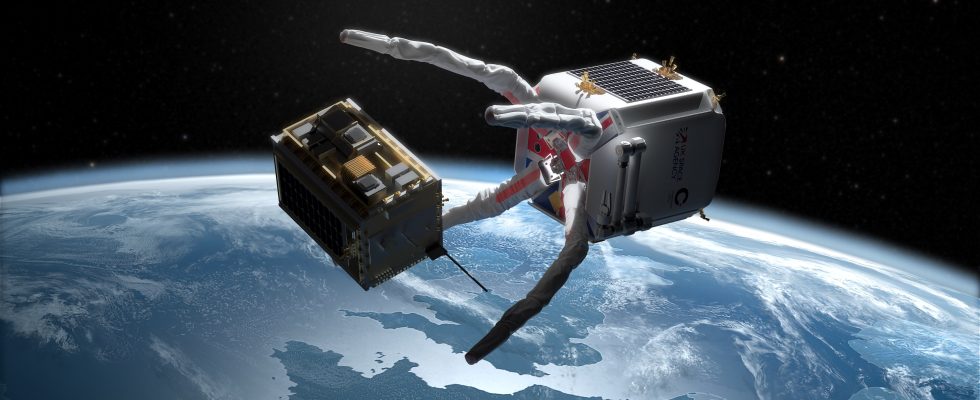We are far from the “polluter pays” principle, but as a nod to fate, the first “garbage truck” satellite, that of the Swiss company ClearSpace under the supervision (and funding) of the European Space Agency (ESA), will leave in 2026 aboard a Vega rocket to recover debris from… a Vega rocket launched in 2013 and which is still prowling at an altitude of 700 kilometers and at a speed of around 28,000 kilometers/ hour !
“This is an emblematic mission because it is unprecedented, but let’s not forget that before you want to clean up space, you must first stop polluting it”, recalls Luisa Innocenti. For the manager of the Clean Space program at ESA, the space world became aware of the debris it generates about fifteen years ago, yet things are not going fast enough: “I am pessimistic because, as for the issue of climate change, we talk a lot about pollution in orbit, but where is the money and where are the regulatory laws? With between 26,000 and 36,000 objects over 10 centimeters circling above our heads – dead satellites, rocket stages, pieces of solar panels and other large pieces of debris – is it already too late? “We are witnessing, on average, one collision or explosion per month which produces other debris, sums up Pierre Omaly, project manager and expert specialist in Space Surveillance at the National Center for Space Studies (Cnes). And, according to our digital models, even if we stopped any launch today, the phenomenon would self-generate.”
And we are far from stopping everything: with the various constellation projects, up to 30,000 additional satellites could be launched by 2030. For once, that of Elon Musk may not be singled out: his Starlinks (3,600 shipped) are below 600 kilometers and, at the end of their life (after five to seven years), fall back into the atmosphere, where they burn up. On the other hand, Eutelsat’s OneWeb should place its machines at an altitude of 1,200 kilometers and risks weighing down an already crowded orbit. “Above 800 kilometers, where many observation satellites have been deployed and where many of them no longer work, the question becomes critical and we have to go find them”, continues Pierre Omaly. Hence the appearance, in recent years, of a new job: space garbage collector, of which the ClearSpace-1 mission will be a pioneer.
A demonstrator to test new technologies
“It consists of sending a spacecraft equipped with a four-arm gripper which will move towards its target, catch it and deorbit it”, sums up Luc Piguet, the director and co-founder of ClearSpace. Easier said than done since approaching the piece of Vega rocket, 1.8 meters by 2 meters and weighing some 100 kilograms, will prove very tricky: “We don’t know how it moves or at what speed “, specifies Luisa Innocenti. If the “rendezvous” phase works, then the capture phase will have to be initiated, which will be carried out in automatic mode. “Our gripper is designed to be opened and closed several times, which makes it possible to repeat the capture operation if necessary”, assures Luc Piguet. There will remain the last step, which aims to precipitate the fighter/target assembly into the atmosphere: “This implies going through a controlled reentry, that is to say having the right inclination.” So many unknowns that make ClearSpace a demonstrator. But if the technologies are proven, a huge market opens up to him. Response in 2026.
>> This article is from the special book “Aeronautics: beware of overheating” on newsstands on June 22.
